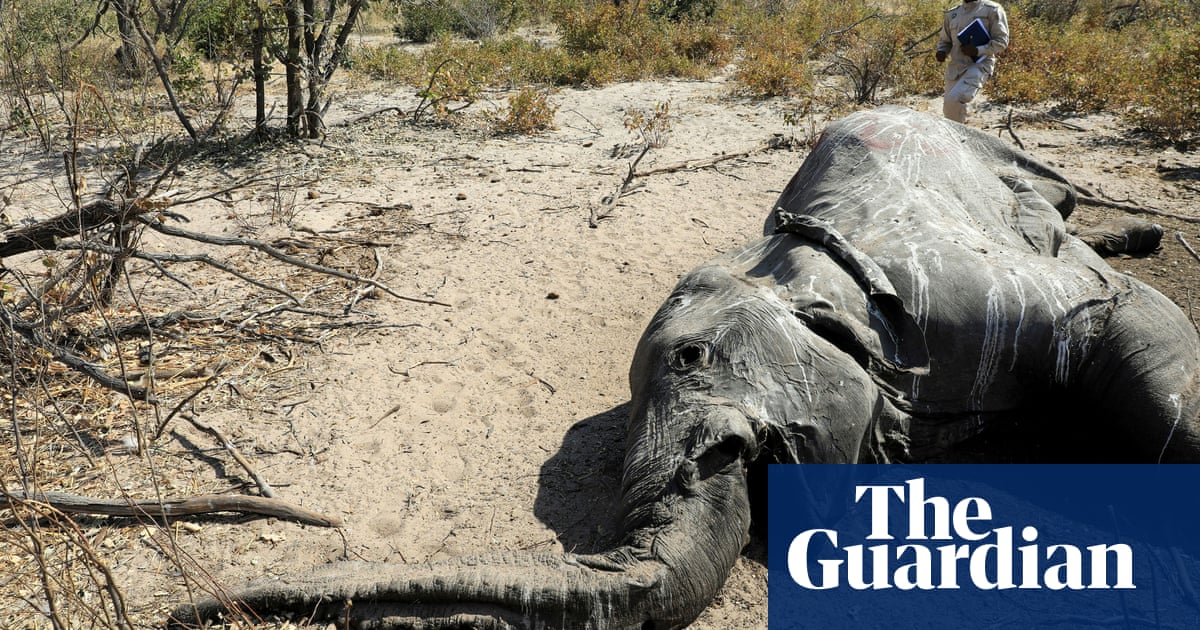
Between May and June of 2020, the passing of 350 elephants in the Okavango delta of Botswana left experts puzzled and led to worldwide speculation about the cause. Elephants of varying ages and genders were impacted, exhibiting symptoms such as circling before unexpectedly collapsing and passing away. In a separate incident two months later, an additional 35 elephants died in north-western Zimbabwe.
According to government officials, the deaths in Botswana were linked to a cyanobacterial toxin, but no specific information was released at the time.
However, the examinations conducted on the deceased elephants in Zimbabwe have yielded results indicating that the culprit behind their deaths was a relatively unknown bacterium known as Pasteurella Bisgaard taxon 45. This bacterium caused septicaemia, also known as blood poisoning.
According to a study published in the journal Nature Communications, the bacterial infection that caused the deaths of elephants has not been connected to this species before. Scientists suspect that it may be the same infection that caused deaths in nearby countries.
The paper, written by an international team of researchers from the Victoria Falls Wildlife Trust, the University of Surrey, and laboratories in South Africa and the UK government’s Animal and Plant Health Agency (APHA), highlights a crucial conservation issue for elephants in the largest remaining meta-population of this endangered species.
The population of African savanna elephants is decreasing at a rate of 8% annually, mainly due to illegal hunting, leaving only 350,000 in their natural habitat. The study proposes that the threat of infectious diseases should also be taken into consideration.
Dr. Arnoud van Vliet, a researcher at the University of Surrey, stated that the illness “contributes to the increasing number of diseases that pose a threat to elephant preservation.” He also noted that elephants are social creatures and the drought they were experiencing likely caused additional stress, making them more susceptible to an outbreak.
Previously, Pasteurella bacteria has been associated with the unexpected demise of approximately 200,000 saiga antelopes in Kazakhstan. Researchers suggest that this event could provide insight into the fate of the elephant herds. The scientists hypothesize that Pasteurella bacteria typically resides without harm in the tonsils of some or all of the antelopes. However, a rise in temperature to 37C triggered the bacteria to enter the bloodstream, leading to septicaemia.
According to the paper, the Bisgaard taxon 45 has been identified in tigers and lions (through testing a human bite wound) as well as in chipmunks and psittacines.
Experts also examined the carcasses for cyanide, a substance that is sometimes used to harm elephants, but no poisons were found in or around the waterholes. Another possible explanation was the consumption of toxins from algal blooms. However, poaching was quickly dismissed as a cause since the elephants still had their tusks intact.
According to Dr. Chris Foggin, a wildlife veterinarian at the Victoria Falls Wildlife Trust, the investigation into the widespread animal deaths was difficult.
He stated that one challenge we frequently encounter is finding and getting to the carcasses in a timely manner to collect valuable samples. Additionally, we were uncertain about the nature of the illness we could potentially be dealing with.
At first, we thought it could be anthrax, a disease that is common in the region. It could also have been another illness that could harm human health. As a result, we had to be careful when conducting postmortem examinations on the elephants. This was a challenging task due to the size of the animals and the conditions we were working in.
The researchers were not able to travel to the location in Botswana and most of the authorized samples were taken from decomposing animals. According to the study, the discovery of blood poisoning “could be an ongoing issue in this area”, as previous instances may have been overlooked due to a lack of testing.
Source: theguardian.com
















